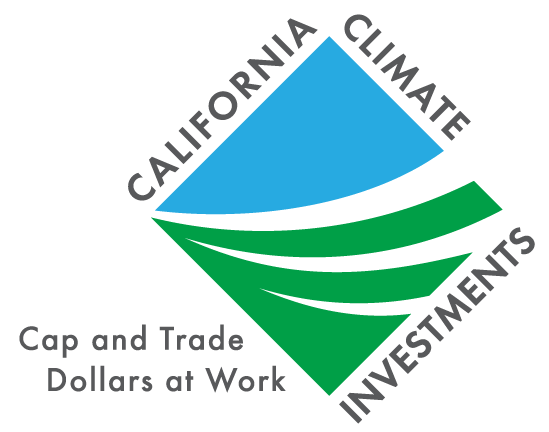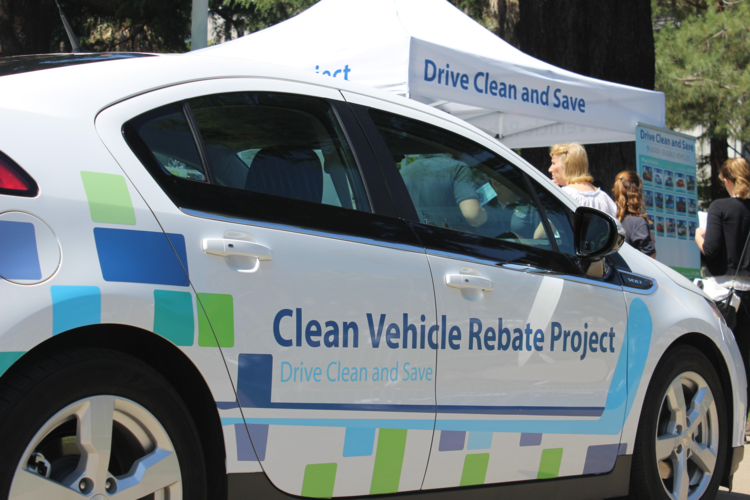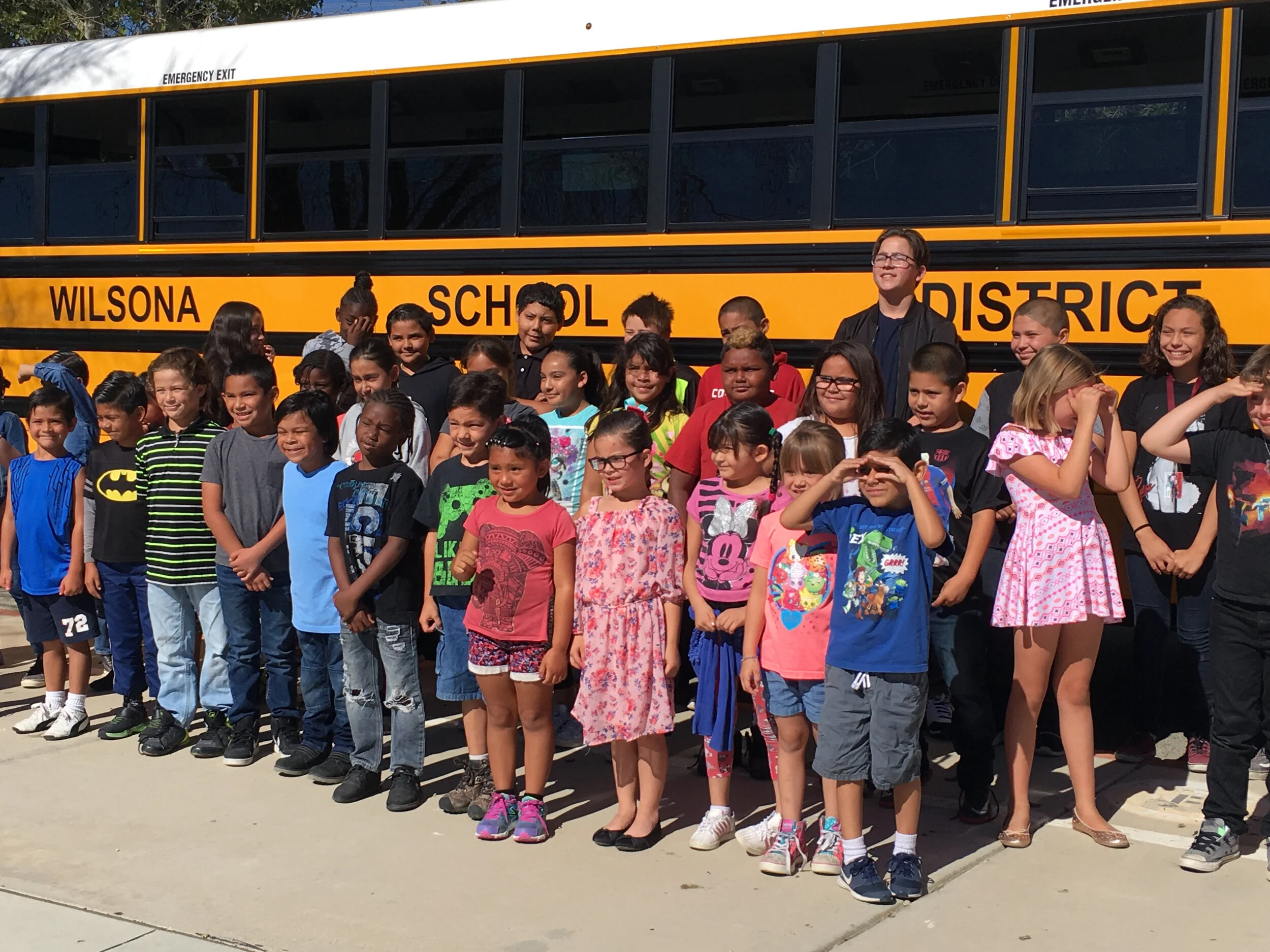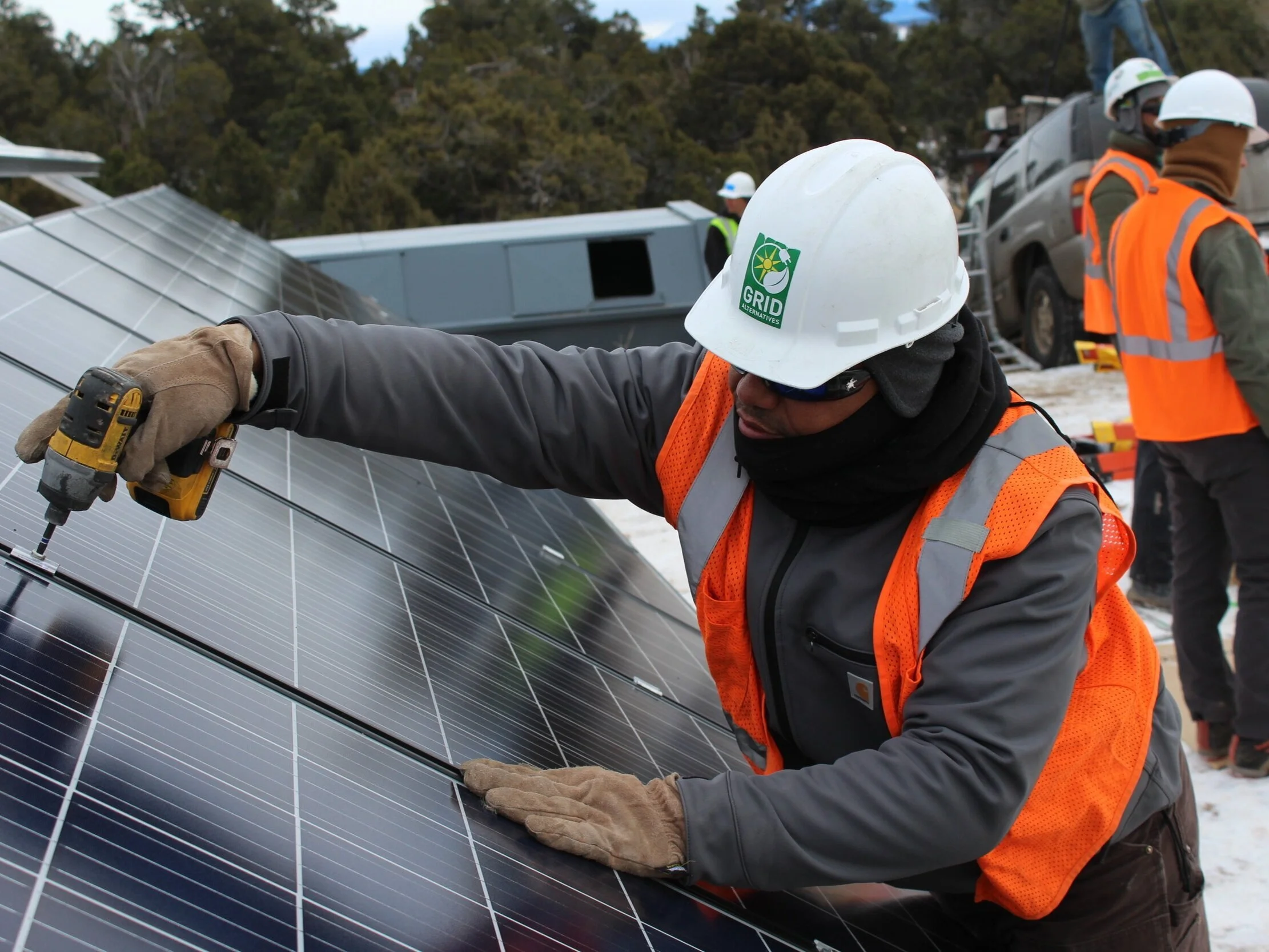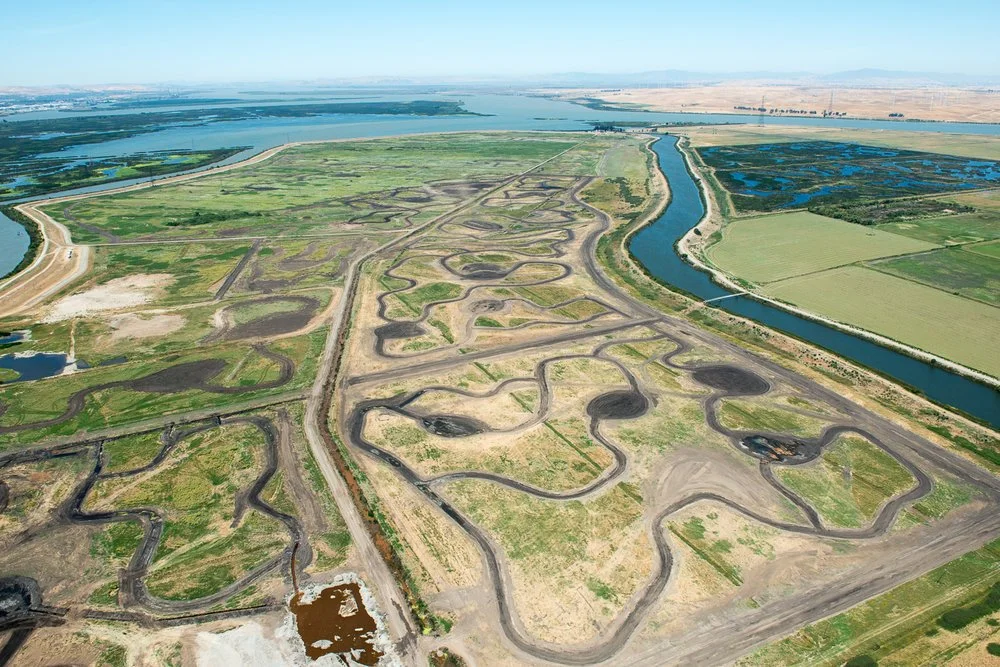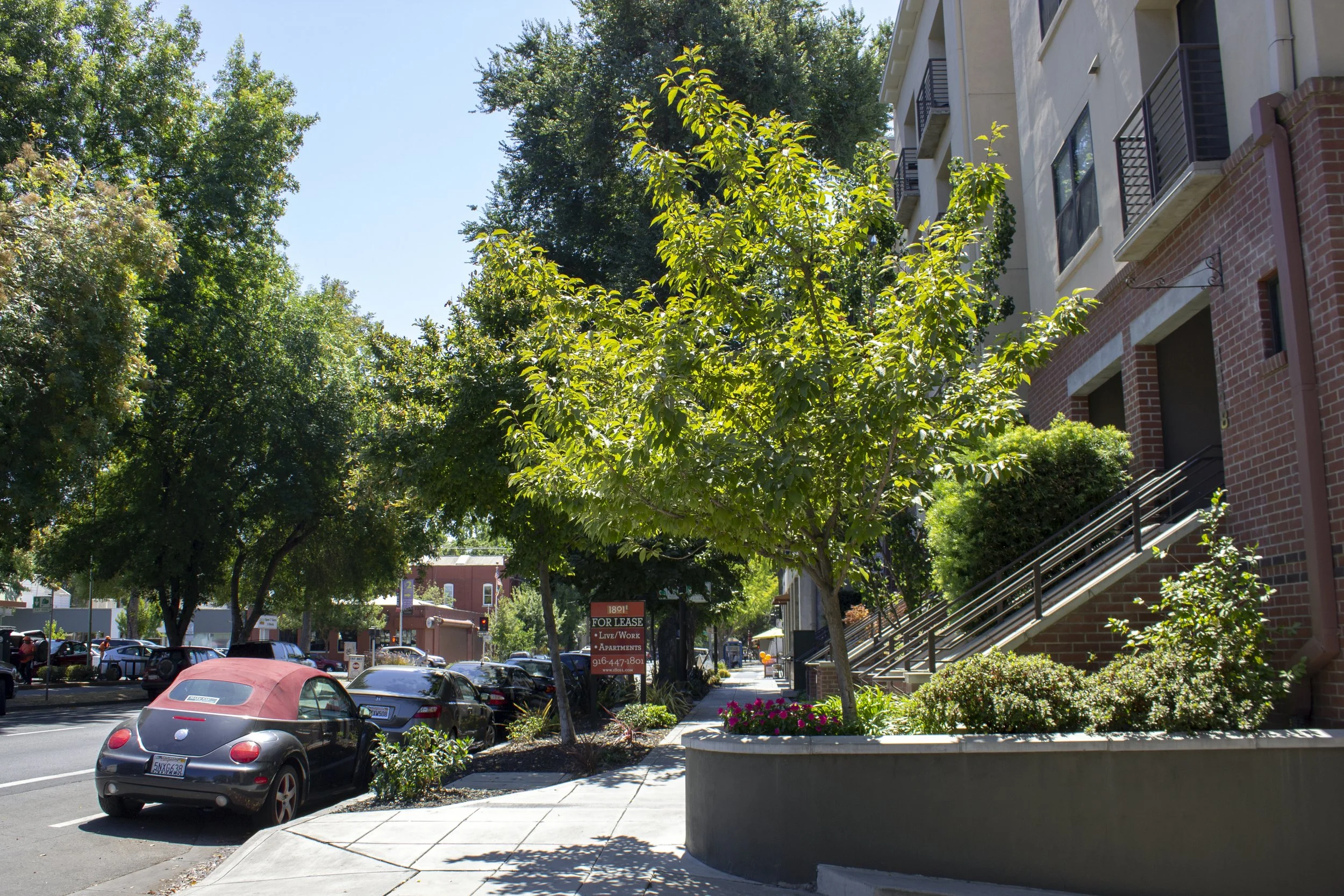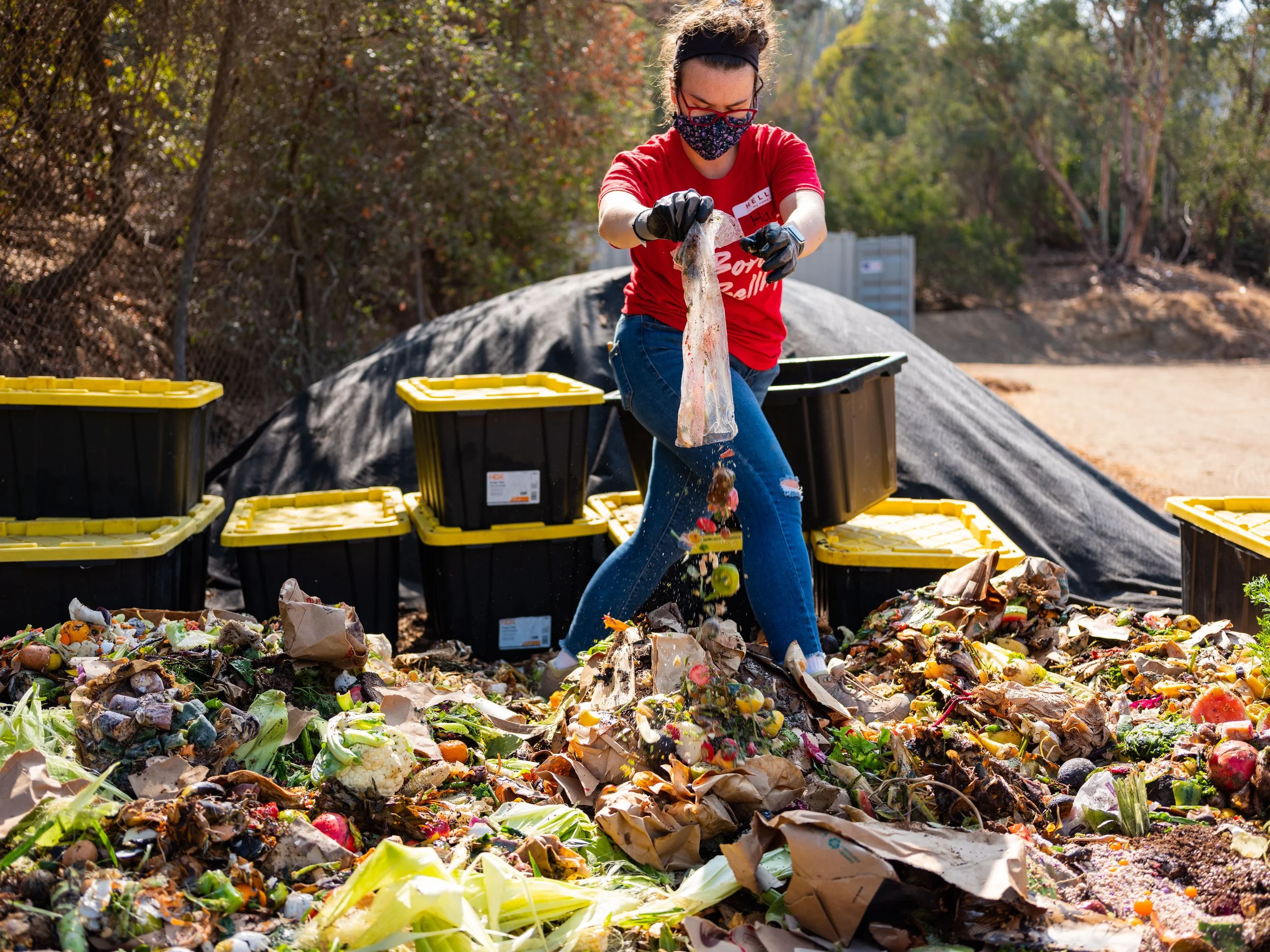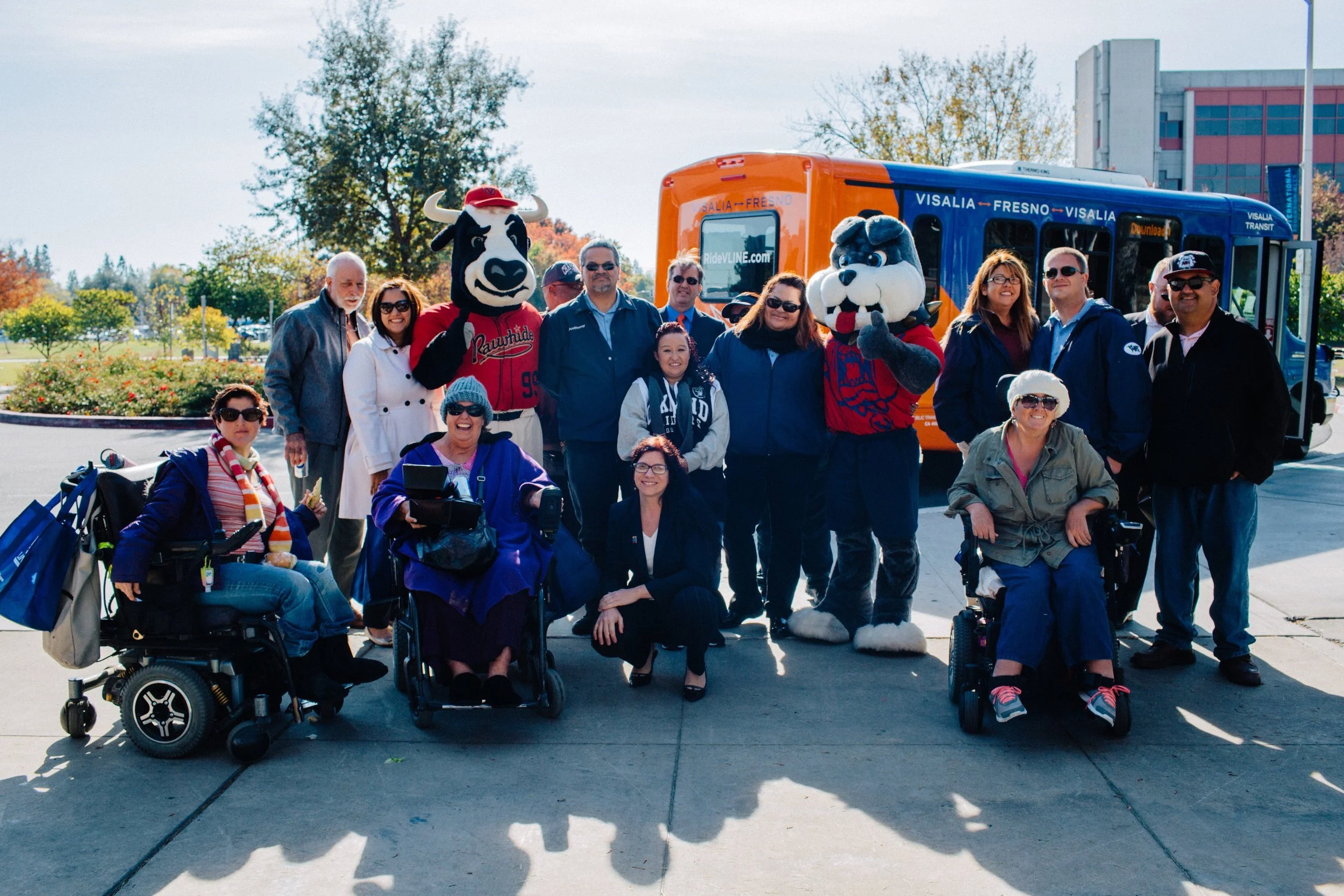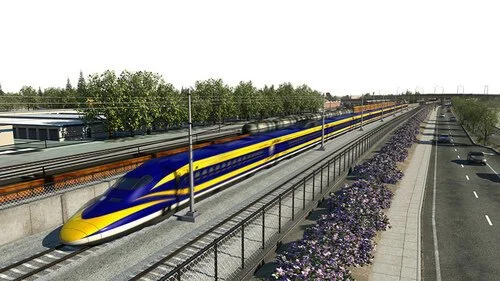Across California, more than 80 California Climate Investments programs administered by over 20 State agencies are continuing to direct billions of dollars into our State’s transition to a low‑carbon and more equitable future. Explore program pages to learn about available funding opportunities and to view summary statistics including implemented dollars, benefits to priority populations, jobs supported, pollution reductions, and more.
Explore Programs by Applicant Type
Select from the applicant types below to learn about funding opportunities available to you, access resources designed to help you learn more about California Climate Investments and how to apply for funds, and to read about funded projects.
Explore Programs by Funding Category
Select from the funding categories below to learn about open funding opportunities for different project types, access resources designed to help you learn more about California Climate Investments and how to apply for funds, and to read about funded projects.

Water and Energy

Planning
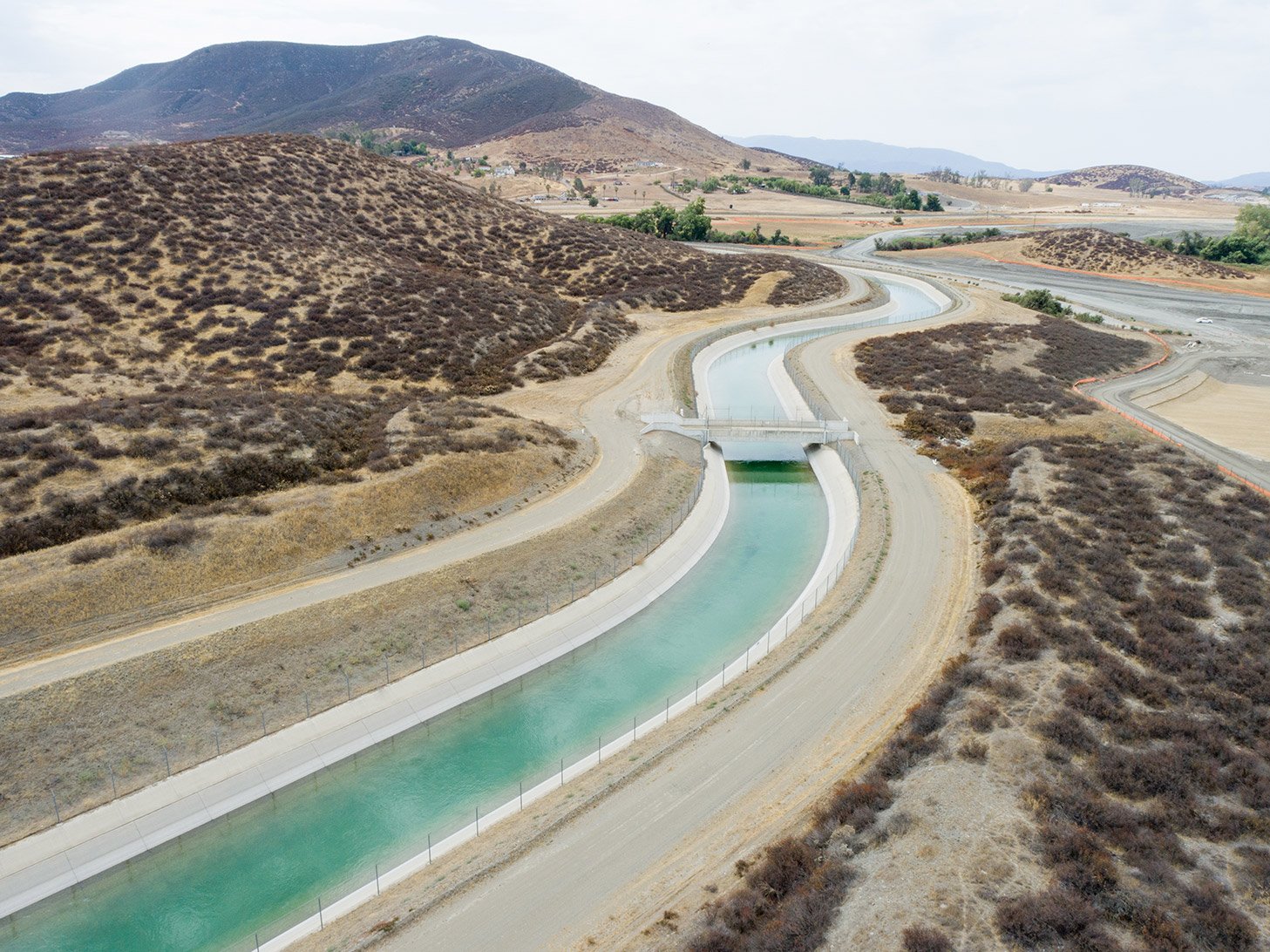
Water Diversion

Transportation

Sustainable Communities

Technical Assistance

Nature Based Solutions

Agriculture

Workforce

Land Use
Explore Programs by Agency
Provides a community-focused action framework to improve air quality in communities most impacted by air pollution.
Advanced Technology Freight Demonstration Projects provide funding for pre-commercial demonstrations of advanced vehicles, engines, equipment, and transportation systems. These advanced technology projects demonstrate zero-emission or near zero-emission vehicles and equipment that use less petroleum and emit less GHG emissions.
Provides affordable and reliable transportation for agricultural workers in disadvantaged and low-income communities. The project uses clean technology vehicles to get agriculture workers to their job sites, and reduces the number of single-occupancy cars on the road, improving air quality.
Financial incentives to retire older, more polluting vehicles and replace them with newer, cleaner hybrid and zero-emission vehicles or alternative mobility options.
Funding to deploy scalable clean transportation and mobility strategies for reducing GHG emissions from schools in disadvantaged communities. Strategies may include electric vehicles and electric vehicle supply equipment in schools (K – 12), car sharing for staff at schools, and outreach to students, parents and the community.
This program provides a variety of clean mobility projects (including car share, bike share, vanpool, and ridesourcing) in disadvantaged communities using advanced clean vehicles (zero-emission or plug-in hybrid electric vehicles) and associated infrastructure.
Vouchers toward the purchase of zero-emission equipment used in off-road freight transport (such as forklifts, transport refrigeration units, gantry cranes, and terminal trucks).
Vouchers for the purchase of zero-emission, trucks and buses, including funding for charging or fueling infrastructure.
Rebates for the purchase or lease of new, eligible light-duty vehicles, including electric, fuel-cell, and plug-in hybrid electric vehicles.
Air Grants fund projects that provide support for California community-based organizations and California tribes. Grants help awardees participate in the AB 617 process, and to build capacity to become active partners with government to identify, evaluate, and ultimately reduce air pollution and exposure to harmful emissions in their communities.
Incentive grants to help owners of older high-polluting vehicles and equipment replace them with newer models that have much lower emissions—or zero emissions.
Grants for priority low-income consumers to purchase or lease a new or used hybrid, plug-in hybrid, or electric vehicle.
This program offers lower-income consumers a low-interest loan and a vehicle price buy-down to purchase a new or used zero-emission, plug-in hybrid electric, or hybrid vehicle. Lenders are offered a loan loss reserve to mitigate their risk.
Promote the adoption of new low-GWP refrigerant technologies; recycling, recovery, reclamation, or destruction of high-GWP refrigerants services to achieve short- and long-term climate benefits, energy efficiency, and other co-benefits.
Funding Agricultural Replacement Measures for Emission Reductions funds agricultural harvesting equipment, heavy-duty trucks, agricultural pump engines, tractors, and other equipment used in agricultural operations.
A multi-faceted outreach effort that helps streamline access to California Climate Investments' consumer-facing, equity-focused clean transportation and clean energy incentive programs for low-income and disadvantaged communities.
This program enhances air quality monitoring for prescribed fires and provides a public awareness campaign on the benefits of prescribed burning.
This pilot project helps rural school districts get rid of older, dirty school buses and replace them with ultra-clean and zero-emission models.
Funding to conduct mobile air monitoring in communities across the state.
The Sustainable Transportation Equity Project (STEP) aims to address community residents’ transportation needs, increase access to key destinations (e.g., schools, grocery stores, workplaces, community centers, medical facilities), and reduce GHG emissions. STEP has the flexibility to fund many different types of projects to ensure that STEP funds can help meet the needs of each community within that community’s context.
The California Air Resources Board provides funding to local air districts to offer vouchers or rebates to replace old, inefficient, and highly polluting residential wood stoves, inserts, and fireplaces used for primary space heating with cleaner, more efficient home heating devices.
Zero- and Near Zero-Emission Freight Facilities provide funding for pre-commercial demonstrations of advanced vehicles, engines, equipment, and transportation systems.
California Coastal Commission projects facilitate GHG emission reductions through land use and planning to address the impacts of climate change through the development of new or amendment of existing Local Coastal Programs, which are local land use plans for the coastal zone of California.
Through the Training and Workforce Development Program, the California Conservation Corps employs young adults for a year of service resulting in job skills and work experience to launch meaningful careers. Corpsmembers implement forest fuel reduction, habitat restoration, and energy efficiency projects which reduce greenhouse gas emissions.
Installation of energy efficiency measures and upgrades like solar PV and health and safety improvements for farmworker dwellings at no cost to residents.
Technical assistance and incentives for the installation of energy-efficiency measures and solar photovoltaics (PV) in low-income multifamily dwellings in disadvantaged and other communities.
The program funded the installation of energy-efficiency measures, solar water heating, and solar photovoltaics in low-income single-family homes.
This program funds the restoration of California wetlands and watersheds.
This program provides financial incentives to implement non-digester practices to reduce or avoid methane emissions, including solid separation, conversion from flush to scrape manure collection and enhanced pasture-based management practices.
Technical assistance in the form of hands-on application assistance to farmers and ranchers participating in the Healthy Soils Program, the State Water Efficiency and Enhancement Program, and the Alternative Manure Management Program.
The development of dairy digesters that reduce methane emissions from manure and the research and demonstration projects that study manure management practices which reduce greenhouse gas emissions.
Financial incentives for on-farm management practices that sequester carbon, including soil management, establishment of herbaceous and woody cover, and demonstration projects showcasing these practices.
Funds demonstration trials evaluating additives and dietary modifications that have the potential to reduce enteric methane emissions in the dairy and livestock sectors.
Funds on-farm pump and motor enhancement or replacement, irrigation system enhancement, and fuel conversion; projects must reduce water use.
Fire prevention and preparedness grants, maintenance of evacuation routes, cooperative extension fire advisors, and land use planning training and recommendations.
Funds the operations of the CAL FIRE Fire Prevention program. This includes a variety of fire prevention services and programs in the State Responsibility Area such as defensible space inspections, fire prevention education, fire hazard severity mapping, implementation of the State and local fire plans, evacuation routes, and infrastructure.
CAL FIRE crews around the state that conduct prescribed burns and other fuel reduction treatments to help protect communities from wildfires, create healthier and more climate-resilient ecosystems and watersheds, and stabilize carbon stored in natural lands.
Reforestation, prescribed fire, forest fuel reduction, pest management, conservation easements and fee acquisitions, and forest biomass utilization.
Research projects that investigate priority topics in support of California Forest Carbon Plan Implementation.
Tree planting and environmental improvements in child-accessible spaces such as K-12 public school campuses and nonprofit childcare facilities. These projects invest in nature-based climate solutions that deliver multiple benefits.
This program provides grants for community organizations and local governments for urban tree planting, urban forest management, and for the utilization of urban forest waste wood for wood products and bioenergy.
Funds hazardous fuel removal, fire prevention public education, fire prevention and wildfire safety planning.
Community Composting for Green Spaces Grant increases the number of community groups operating small-scale composting programs in green spaces within disadvantaged and low-income communities, and to increase the capacity of those composting programs. Green spaces include, but are not limited to, community gardens, urban farms, and other public spaces where small-scale composting is appropriate.
Funds projects to prevent food waste from being generated and/or becoming landfill waste, promotes distribution of rescued food to people, and requires food waste residuals to be composted or digested when available.
Provides grants for the construction, renovation, or expansion of facilities to preprocess, digest, or compost organics into compost, soil amendments, biofuels, or bioenergy.
Loans to fund construction, renovation, or expansion of facilities for preprocessing, digesting, or composting organics, or the preprocessing or manufacturing of value-added finished products using recycled fiber, plastic, or glass.
The construction, renovation, or expansion of facilities to process or manufacture value-added products from California-derived, newly diverted fiber, plastic, or glass waste.
The purpose of this competitive grant program is to lower overall greenhouse gas emissions by expanding and improving waste diversion in California through reuse.
Capacity planning, collection, edible food recovery, education and outreach, enforcement and inspection, program evaluation/gap analysis, procurement requirements, and record keeping.
This program funds new infrastructure and education programs that promote active modes of transportation, such as biking and walking. This program supports new pedestrian facilities, bike paths and lanes, and new or expanded bike share programs.
Operating and capital assistance for transit agencies to reduce GHG emissions and improve mobility, with a priority on serving disadvantaged communities.
Funded the replacement of hydroelectric turbine runners at two DWR State Water Project facilities.
Commercial and institutional water-energy efficiency programs or projects, and residential water-energy efficiency programs or projects benefiting disadvantaged communities.
Upgrades to heating, air conditioning, and ventilation (HVAC) systems in public schools and replacement of noncompliant plumbing fixtures and appliances that fail to meet water efficiency standards.
Grants to food processors to implement projects that reduce GHG emissions and onsite energy consumption.
The Inclusive, Diverse, Equitable, Accessible, and Local (IDEAL) Zero-Emission Vehicle (ZEV) Workforce Pilot funds projects that support ZEVs, ZEV infrastructure, and ZEV-related commercial technologies in California, with focus on priority populations.
The California Energy Commission will provide incentives to support low-carbon fuel production projects in California. The program will support new and expanded renewable ultra-low carbon transportation fuel production at commercial scale, helping the State’s fuel industry work towards a low-carbon future.
Adoption of on-site renewable energy technologies (such as wind and solar) at agricultural operations.
The California Environmental Protection Agency (CalEPA), in consultation with the Energy Commission, the Governor’s Office of Business and Economic Development, the Governor’s Office of Planning and Research, the Labor and Workforce Development Agency, the Natural Resources Agency, the Transportation Agency, and the Air Resources Board, is conducting two studies focused on the state’s goal of achieving carbon neutrality by 2045.
The California Governor’s Office of Emergency Services (Cal OES) will fund the procurement and maintenance of fire engines for local fire agencies and support of the California Fire and Rescue Mutual Aid System. The goal of the program is to increase and maintain emergency response capabilities within the State’s Fire and Rescue Mutual Aid System in order to help protect communities from wildfires and other disasters.
Local assistance grants to fire departments within High Hazard Severity Zones to pre-position emergency services crews and equipment during red flag events in order to protect communities from wildfires.
California’s high-speed rail system will connect the mega-regions of the State. The Phase 1 system will run from San Francisco to the Los Angeles basin in under three hours at speeds capable of over 200 miles per hour. The system will eventually extend to Sacramento and San Diego, totaling 800 miles with up to 24 stations (Phase 2).
The purpose of this new California Natural Resources Agency program is to increase local capacity in the northern, central, and southern regions of the State to develop region-wide plans and shovel-ready projects for forest restoration, fire protection, and watershed improvements in support of the California Forest Carbon Plan.
Establishment, enhancement, and expansion of community spaces and parks, tree planting, green infrastructure in streets and alleys, and the construction of active transportation infrastructure.
Natural shoreline projects that restore wetlands, watersheds and coastal habitats, and conserve land. Projects protect existing natural lands, restore or enhance habitats to enhance resilience to climate change for wildlife, maintain vegetative communities that sequester carbon, and provide habitat stability and resistance to natural disasters such as flooding, wildfire, or protection from sea level rise.
Protects communities and natural resources from sea level rise, with a focus on adaptation of public infrastructure along the coast including urban waterfronts, ports, and ecosystems.
This program provides grants to implement climate adaptation projects using natural infrastructure and will support local governments on adaptation plans to protect built and natural infrastructure from sea level rise and other climate adaptation issues.
Transformative capital improvements that are modernizing California’s intercity, commuter, and urban rail systems, bus and ferry transit systems, to significantly reduce GHG emissions, vehicle miles traveled, and congestion.
The Safe and Affordable Drinking Water Fund is a part of the Safe and Affordable Funding for Equity and Resilience (SAFER) Program. SAFER is a set of tools, funding sources, and regulatory authorities designed to meet the goals of safe, accessible, and affordable drinking water for all Californians.
Program will support applicants to the U.S. Department of Energy's Title 17 Clean Energy Financing Program, which provides financing for the construction, expansion, and/or rehabilitation of manufacturing facilities for housing across California.
Funding for affordable housing, active transportation, transit, and solar photovoltaic systems.
Actionable, partnership-based climate change research that integrates community research partners into the process from the start as funded partners, co-leads, or collaborators to inform climate actions that directly benefit California communities.
The Strategic Growth Council’s Sustainable Agricultural Lands Conservation (SALC) Program protects critical agricultural lands from conversion to more GHG-intensive residential uses by facilitating conservation easements and strategy plans that result in direct protection of at-risk lands.
Community Assistance for Climate Equity (CACE) is a suite of capacity building programs that aim to equip underinvested communities at the frontlines of the climate crisis with the tools to access funding for climate adaptation, mitigation, and resilience.
The Strategic Growth Council’s Transformative Climate Communities (TCC) Program funds community-driven, collaborative projects and planning activities that integrate a variety of California Climate Investments project types to create transformative change at the neighborhood level.
This program funds climate adaptation projects for natural and working lands. Projects may include conservation agreements; adaptation and resiliency planning; technical assistance for land managers; and improved rural-urban coordination on climate change adaptation.
The California Workforce Development Board will develop industry-based, worker-focused training partnerships that connect California’s “high road” employers with existing established workforce development programs to build skills and capacity for training and employment within various employment sectors.
Funds San Francisco Bay Conservation and Development Commission staff to work with project proponents to make Bay shoreline projects more resilient and to work towards regional resilience through vulnerability assessments and adaptation planning.
